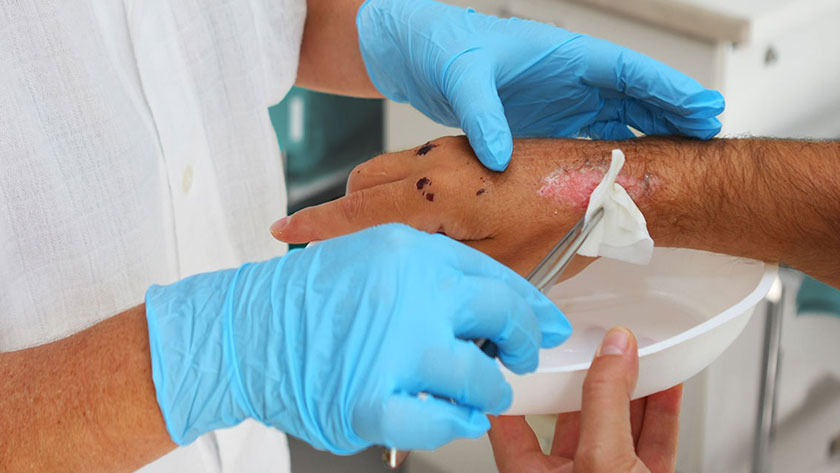Outpatient wound centers: your questions answered

1. What types of wounds are treated there?
The most common wounds seen in an outpatient setting are lower extremity ulcers, predominantly venous leg ulcers and diabetic foot ulcers. These patients’ quality of life is greatly affected by the need to care for their wound on a daily, ongoing basis.
2. Who manages these centers?
Wound centers are almost always considered an outpatient department of a hospital. A hospital may choose to run the wound center or contract with a wound management company to run it. Either way, patients should expect to work with specialized clinicians to develop an aggressive treatment plan, with the goal of healing in a timely fashion.
3. Who makes referrals?
Referrals may come from a patient’s provider, home care nurse, or as a referral after discharge from an acute care stay. Long-term care facilities also refer patients to outpatient wound centers for evaluation and treatment. Or, patients may even refer themselves.
4. What happens upon admission?
The initial visit can be lengthy. The patient care team takes a comprehensive history to ensure they understand and address all the potential factors that affect wound healing. The center’s staff gather information about past and current treatment for the wound. The physician performs a complete physical exam, making sure to address all co-morbidities and conditions as he or she develops the patient’s treatment plan.
5. Is care holistic?
Most wound centers use a multidisciplinary approach to care, which includes workup for circulation, infection and nutrition. Most important, the treatment plan addresses all co-morbidities that may be affecting the patient’s ability to heal.
6. How are wounds treated?
Non-viable tissue is removed when appropriate, and topical wound care is used to maintain a moist wound environment. A comprehensive plan includes concurrent treatment that addresses the individual etiology of wounds, such as offloading for diabetic foot ulcers or providing compression therapy for venous wounds.
7. What happens upon discharge?
The center follows the patient closely until the wound heals. The clinical staff collaborates with the patient’s caregivers and primary care physicians during the course of treatment. As the patient gets closer to healing, the staff considers the care and education necessary for the patient to maintain healing.
References
- Collins L, Seraj S. Diagnosis and treatment of venous ulcers. American Family Physician. 2010;81(8):989-996. Available at: http://www.aafp.org/afp/2010/0415/p989.html. Accessed January 10, 2013.
- Simon DA, Dix FP, McCollum CN. Management of venous leg ulcers. BMJ. 2004; 328(7452):1358–1362. Available at: http://www.ncbi.nlm.nih.gov/pmc/ articles/pmc420292. Accessed January 10, 2013.
- National Diabetes Statistics, 2011. National Diabetes Information Clearinghouse website. Available at: http://diabetes.niddk.nih.gov/dm/pubs/statistics/#fast. Accessed January 10, 2013.
- Brem H, Sheehan P, Rosenberg HJ, Schneider JS, Boulton AJ. Evidence-based protocol for diabetic foot ulcers. Plast Reconstr Surg. 2006;117(7 Suppl):193S-209S; discussion 210S-211S. Available at: http://www.ncbi.nlm.nih.gov/pubmed/16799388. Accessed January 10, 2013.
